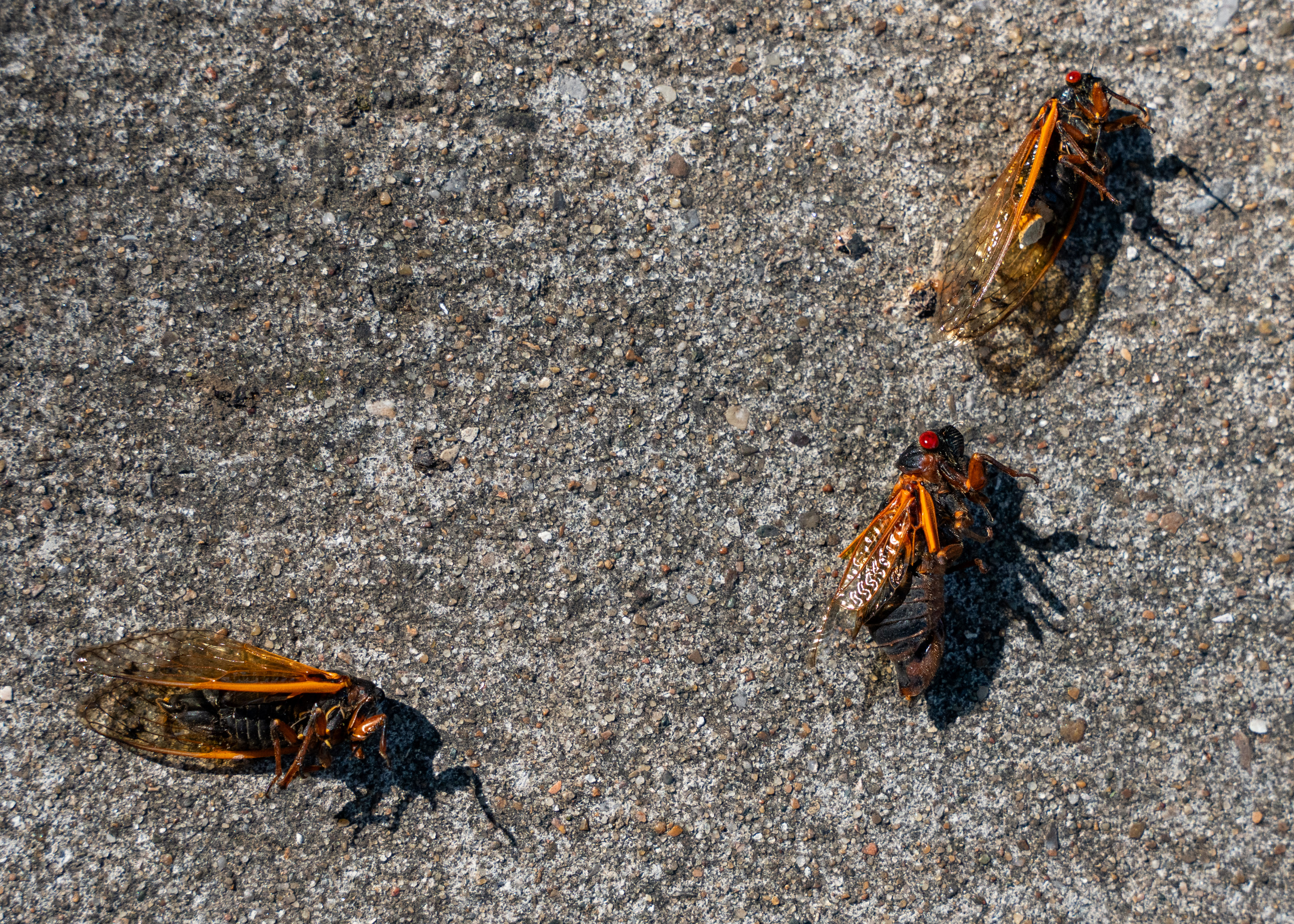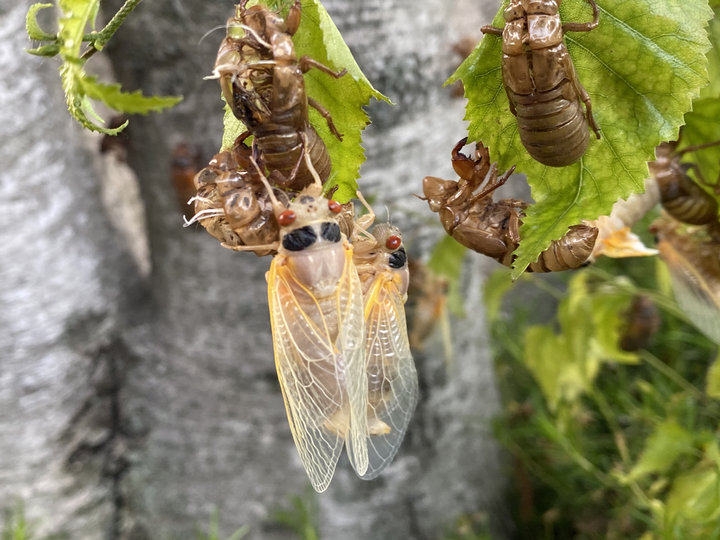The historic 17-year cicada brood that Illinois contended with for weeks will soon die off, and as residents notice the smell of the brood's decay, they might wonder: What should you do with the dead cicadas?
If homeowners want to get rid of the dead bodies and exoskeleton, researchers and specialists at the Morton Arboretum in Lisle encourage you to use them as fertilizer, citing their benefits to the soil microbiome.
"We encourage people to keep them in your planting bed," said Stephanie Adams, plant health care leader. "You can top dress it with mulch, so you don’t have to see them necessarily."
"To compost them," Adams continued, "you can rack them into your turf grass and mulch them with your lawn mower. It will help decompose them a little bit faster."
Adams and her colleagues described the past five weeks as a whirlwind of studying cicadas.
"I find it to be a fascinating experience, and I think a lot of people have,” she said. "I think a lot of people have come to appreciate insects and insect biology because of them."
If you're noticing small branches and leaf debris piling up in your yard, there's a reason why. Adams said female cicadas lay their eggs on the underside of those branches.
"What will eventually happen is the flagged branches will break off from the tree and drop to the ground, and that will allow the cicada eggs, once they hatch in five to seven weeks, the nymphs, to be able to crawl into the ground and continue their lifecycle."
While some people might not appreciate the sight, sounds and smell -- "It’s like soil plus crayons, I don’t know why. It's a very organic dense smell," she laughed -- Adams said cicadas play a vital role in our ecosystem and wildlife.
Feeling out of the loop? We'll catch you up on the Chicago news you need to know. Sign up for the weekly Chicago Catch-Up newsletter.
"A lot of different animals do eat the cicadas, so people are already noticing there's a larger bird population, and foxes eat them, copperhead snakes eat them," she said.
She's already looking forward to the next emergence.
"In our area in northern Illinois, we're not anticipating to have another brood for quite a while," Adams said. "It's probably going to be another 14 years before we see them again."
By then she's hoping researchers will learn so much more about the harmless insects beyond their lifecycle.
"People are really interested in studying that a lot more, so I just kinda look at in 17 years, we will be so much more informed to give better advice specifically [about] which trees to protect, which species, which sizes, all these things—we'll just be better informed,” she said.



